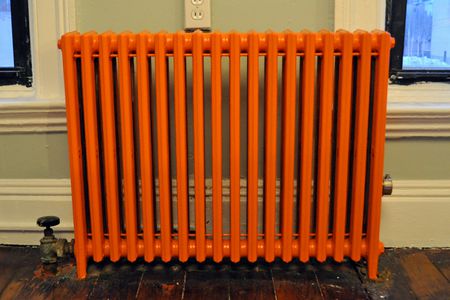Are Your Radiators Heating Your Home Properly?
FreeHeating Blog - 26th March 2019
Have you recently noticed issues with your radiators? Perhaps they are cold in certain areas? Depending on whether a radiator is cold at the bottom or cold at the top, tells you if you have a simple problem that is easy to solve yourself, or rather something more serious which means you will have to call out a Gas Safe-registered engineer. This article will tell you which is which…
If your radiator is cold at the top:
This is the simpler of the two problems, and merely suggests that you have air trapped inside your heating system. Yes you can sort this out yourself by bleeding your radiators. If you don’t know how to do this, don’t worry as it is very easy, you just need a radiator key and a dry cloth.
First you need to turn your heating off, let it cool down, and then turn the key on the radiator’s bleed valve in order to open it. The trapped air will then be able to escape, creating a hissing sound. As soon as you see water starting to appear then you need to close the valve; this will allow hot water to then rise to the top of the radiator.
Although bleeding radiators is a very simple procedure that anyone can do, you may be feeling a bit hesitant so if you would like some help with this it is probably best to call out a qualified heating engineer.

If your radiator is cold at the bottom:
This is a different matter entirely, and is a sign that there is something blocking the flow of water through the heating system; usually sludge. This sludge is a perfectly normal occurrence and is formed naturally over a period of time from the combination of limescale, rust and dirty water. This then settles at the bottom of your radiator, hence why they are cold at the bottom. Issues arise as, although the sludge may only have built up in one of your radiators, it will then be stopping the flow of hot water throughout the entire system, meaning that the radiators that come after it will be affected and will not be able to heat up properly.
Unfortunately, to remove this blockage, requires the assistance of an engineer who will need to perform a “Powerflush”. During this process the engineer will connect a pump to the heating system which then pushes a chemical through the pipework and radiators at a high speed, thus breaking down and removing the sludge. After this process is complete the engineer will then use a descaler to remove limescale, and also a corrosion inhibitor which will prevent rust from forming again in the future.
If the blockage is very bad and the Powerflush is not enough, the engineer might also have to dislodge pieces of sludge using tools on the outside of your radiators. Occasionally the sludge has built up to such a degree that the only thing to do is to replace the affected radiator. This happens more frequently in hard water areas as there will be extra limescale which makes the blockage harder to remove.
You want to avoid excessive sludge build-up in your heating system as it is bad news for your boiler, eventually causing it to break down. It is therefore very important that you act quickly if you think that your system could benefit from a Powerflush.
If you would like to apply for a grant to install a central heating system or replace a faulty boiler, please click here.
